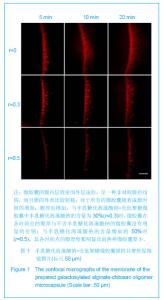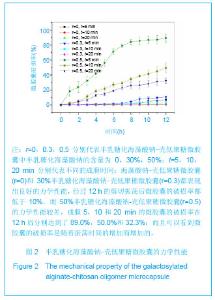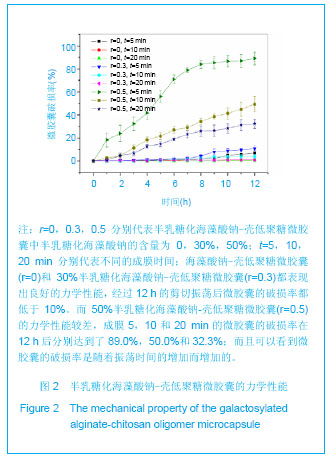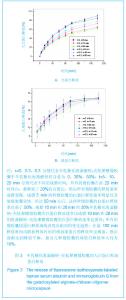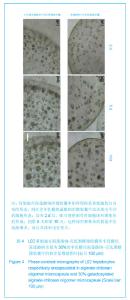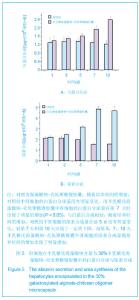| [1] 陈文俊,杨虹琦,王征. 生物微胶囊技术及其应用[J].湖南农业科学, 2007,37(6):70-73
[2] 刘袖洞,于炜婷,王为,等.海藻酸钠和壳聚糖聚电解质微胶囊及其生物医学应用[J].化学进展,2008,20(1):126-139.
[3] 张所信,刘丽荣.壳聚糖微胶囊的制备[J].应用科技,2003,30(4): 51-53.
[4] Sun AM. Microencapsulation of cells. Medical applications. Ann N Y Acad Sci. 1997;831:271-279.
[5] Bartkowiak A,Hunkeler D.Alginate−Oligochitosan Microcapsules: A Mechanistic Study Relating Membrane and Capsule Properties to Reaction Conditions.Chem Mater. 1999; 11:2486-2492.
[6] Goosen MFA,King GA,Mcknight CA,et al.Animal cell culture engineering using alginate polycation microcapsules of controlled membrane molecular weight cut-off. J Membrane Sci.1989;41:323-343.
[7] Kobayashi K,Kobayashi A,Akaike T. Culturing hepatocytes on lactose-carrying polystyrene layer via asialoglycoprotein receptormediated interactions. In: Lee YC, Lee RT, editors. Methods in Enzymology: Neoglycoconjugates part B Biomedical Applications, Vol. 247. San Diego, California: Academic Press,1994:409-418.
[8] Zhang Y,Wang W,Feng Q,et al.A novel method to immobilize collagen on polypropylene film as substrate for hepatocyte culture. Mater Sci Engin.2006;26:657-663.
[9] Lu HF, Lim WS, Wang J, et al. Galactosylated PVDF membrane promotes hepatocyte attachment and functional maintenance. Biomaterials.2003;24(27):4893-4903.
[10] Ding Z,Chen J,Gao S,et al.Immobilization of chitosan onto poly-l-lactic acidfilm surface by plasma graft polymerization to control the morphology of fibroblast andliver cells. Biomaterials.2004;25(6):1059-1067.
[11] Yin C,Mien Chia S,Hoon Quek C,et al.Microcapsules with improved mechanical stability for hepatocyte culture. Biomaterials. 2003;24:1771-1780.
[12] Wandrey C,Bartkowiak A.Membrane formation at interfaces examined by analytical ultracentrifugation techniques. Colloid Surf A: Physicochem Engin Aspect.2001;180:141-153.
[13] Bartkowiak A,Hunkeler D. Alginate-Oligochitosan Microcapsules. II. Control of Mechanical Resistance and Permeability of the Membrane.Chem Mater.2000;12:206-212.
[14] Ying L,Yin C,Zhuo RX,et al.Immobilization ofgalactose ligands on acrylic acid graft-copolymerized poly(ethylene terephthalate) film and its application to hepatocyte culture.Biomacromolecules.2003;4:157-165.
[15] Landry J,Bernier D,Ouellet C,et al.Spheroidal aggregate culture of rat liver cells: histotypic reorganization, biomatrix deposition, and maintenance of functional activities.J Cell Biol.1985;101(3):914-923.
[16] Koide N,Sakaguchi K,Koide Y,et al. Formation of multicellular spheroids composed of adult rat hepatocytes in dishes with positively charged surfaces and under other nonadherent environments, Exp Cell Res.1990;186(2):227-235.
[17] Yumoto AU,Watanabe S,Hirose M,et al. Structural and functional features of bile canaliculi in adult rat hepatocyte spheroids. Liver. 1996;16(1):61-66.
[18] Park IK,Yang J,Jeong HJ,et al.Galactosylated chitosan as a synthetic extracellular matrix for hepatocytes attachment. Biomaterials.2003;24:2331-2337. |
